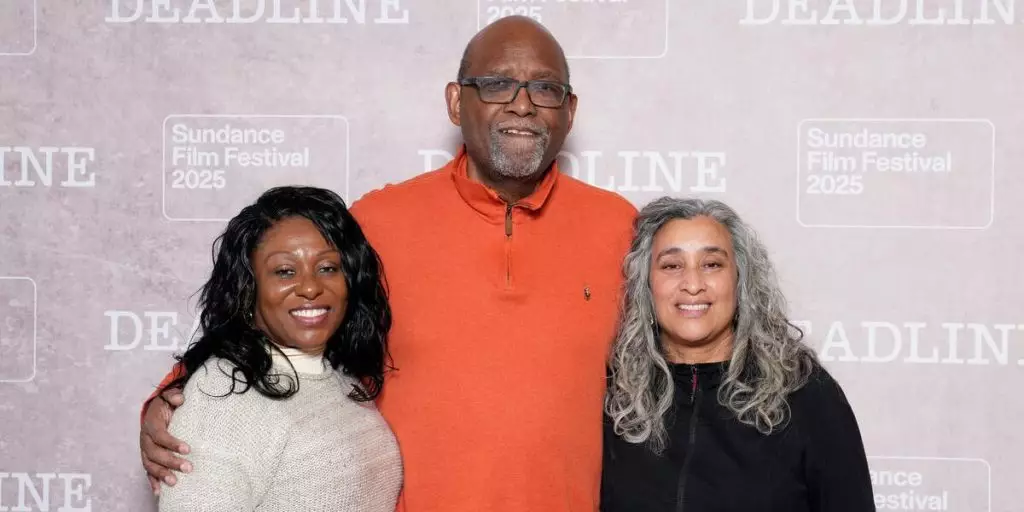The documentary “The Perfect Neighbor,” directed by Geeta Gandbhir, explores a harrowing story that stems from a seemingly minor misunderstanding in a Florida neighborhood. While the film deliberately sheds light on the tragic consequences of the state’s “stand your ground” laws, it also acts as a mirror reflecting deeper societal issues such as race, community dynamics, and police protocols. At first glance, one might assume that the friction between neighbors is a universal experience, yet this film transcends personal disputes to unveil a narrative steeped in tragedy and injustice.
The Escalation of Tension
At the heart of “The Perfect Neighbor” lies the story of Ajike Owens, a devoted mother whose pursuit for justice comes to an abrupt end when confrontations with a local resident, Susan Lorincz (a caricature of the “Karen” stereotype), spiral into fatal violence. Ajike’s experience serves as a chilling reminder of how easily seemingly innocuous neighborhood interactions can escalate. Gandbhir has skillfully blended documented police bodycam footage and investigative interviews to construct a narrative that is as engaging as it is disturbing.
The film traces how small conflicts can snowball into grave consequences. The local children, who were merely playing in a tightly-knit community, find their innocence stripped away by an adult’s lack of understanding and empathy. Gandbhir emphasizes the everyday lives of individuals like Ajike, underscoring how such tragic events could easily befall families anywhere in the U.S. This portrayal serves both as a lamentation for the life lost and as a critique of a broader societal indifferent spirit—one that often seems willing to turn a blind eye to systemic discrimination and violence.
One of the film’s most impactful revelations is the subtle yet profound exploration of race dynamics, which permeate the narrative. As Pam Dias, the mother of the murder victim, poignantly points out, the intersection of community, children’s lives, and the specter of racism cannot be overstated. The documentary invokes questions about how similar situations might play out differently, depending on the racial identities of those involved.
Sam Pollard’s commentary on the contrasting treatment received by Susan Lorincz compared to what might have been afforded to a Black woman is especially compelling. By highlighting these nuances, the film encourages viewers to interrogate the biases that exist not only within interpersonal relationships but also within systemic frameworks, namely law enforcement. Here, Gandbhir invites the audience to reflect on their own perceptions and assumptions regarding race, privilege, and the societal expectations placed upon individuals.
The inclusion of police bodycam footage adds a unique layer to the narrative. Traditionally seen as instruments to uphold law enforcement, these recordings are ingeniously repurposed in Gandbhir’s film to amplify the voices of the community—showcasing their unity, vulnerability, and grief. As the narrative unfolds, it becomes clear that this footage offers a revealing glimpse into the complexities of the situation rather than providing a straightforward account of a crime.
Gandbhir’s decision to highlight the stark contrasts between the treatment of different community members serves to question the effectiveness of the very laws designed to protect citizens. “The Perfect Neighbor” thus becomes a conduit for dialogue surrounding policing practices, questioning how the same rules can yield disparate outcomes based on race and societal standing.
Ultimately, “The Perfect Neighbor” transcends the confines of a tragic event to become an urgent call for reflection and change. By addressing multiple layers of societal complexities—ranging from personal conflict to systemic injustice—Gandbhir successfully creates a narrative that feels at once intimate and universally relevant. This documentary challenges us to consider not only what happened to Ajike Owens but also what her story reveals about the collective responsibility we hold in confronting violence and discrimination. In an age where stories like hers continue to surface, “The Perfect Neighbor” undeniably contributes to a necessary dialogue, albeit through the lens of deep sorrow and longing for justice.


Leave a Reply